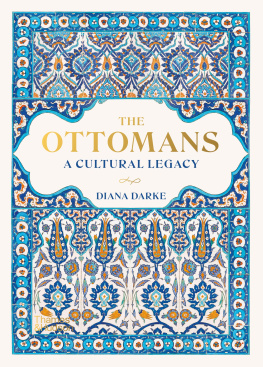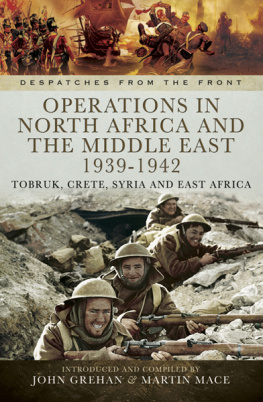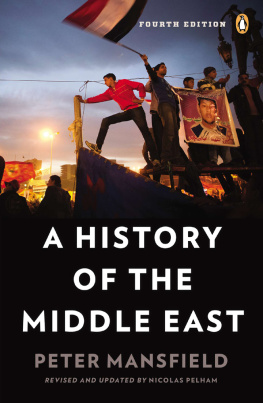More Advance Praise for
The Fall of the Ottomans
A fantastic, readable, and much needed study of the most chronically neglected of all of the Great Wars participants: the Ottoman Empire. Informative and enlightening.
ALEXANDER WATSON, author of Ring of Steel: Germany and Austria-Hungary in World War I
Eugene Rogan has written a meticulously researched, panoramic, and engrossing history of the final years of the Ottoman Empire. This book is essential reading for understanding the evolution of the modern Middle East and the root causes of nearly all the conflicts that now plague the area. An altogether splendid work of historical writing.
ALI ALLAWI, author of The Occupation of Iraq: Winning the War, Losing the Peace
Eugene Rogan has given us an absorbing history of the wars principal military and political battles in the Middle East through the eyes of those who fought them. Weaving together accounts of the horrors of life in the trenches with those on the home front, he exposes the deadly dynamic emerging between the two, from the disastrous Ottoman attempt to invade Russia to the calamity of the Armenian deportations, from the British invasion to the Arab revolt and the Ottoman Empires final defeat and partition.
MUSTAFA AKSAKAL, Chair of Modern Turkish Studies and Associate Professor of History at Georgetown University
A vivid account of the fighting that led to the fall of one of the worlds great empires.
ROGER OWEN, Professor Emeritus of Middle East History, Harvard University


Copyright 2015 by Eugene Rogan
Published by Basic Books
A Member of the Perseus Books Group
All rights reserved. Printed in the United States of America. No part of this book may be reproduced in any manner whatsoever without written permission except in the case of brief quotations embodied in critical articles and reviews. For information, address Basic Books, 250 West 57th Street, New York, NY 10107.
Books published by Basic Books are available at special discounts for bulk purchases in the United States by corporations, institutions, and other organizations. For more information, please contact the Special Markets Department at the Perseus Books Group, 2300 Chestnut Street, Suite 200, Philadelphia, PA 19103, or call (800) 810-4145, ext. 5000, or e-mail .
A CIP catalog record for this book is available from the Library of Congress.
E-book: 978-0-465-05669-9
10 9 8 7 6 5 4 3 2 1
Contents
This book is dedicated to Isabelle Tui Woods Rogan
IT WAS STANDARD PRACTICE BY THE EARLY TWENTIETH CENTURY TO refer to the Ottoman Empire as Turkey. This usage neglected the ethnic and religious diversity of the Ottoman Empire, where Arabs, Kurds, Greeks, and Armenians had as much claim to an Ottoman identity as Turks did. Yet, to avoid the tedious repetition of the word Ottoman throughout the following pages, I have adopted this usage and frequently use Ottoman and Turkish interchangeably, particularly with reference to the army. Whenever I wish to distinguish a specific ethnic or religious community from the Turkish majority, I write of Ottoman Arabs or Ottoman Armenians.
I have tended to refer to cities by their modern Turkish names rather than the classical European forms that were in common use in the early twentieth century. Thus, I refer to Istanbul rather than Constantinople, Izmir rather than Smyrna, and Trabzon rather than Trebizond, in the hope that readers will find it easier to locate these cities on modern maps. I have used standard Western spellings for Arab citiesthus, Beirut, Damascus, Mecca, and Medina rather than Bayrut, Dimashq, Makka, and Madinafor the same reason.
LANCE CORPORAL JOHN MCDONALD DIED AT GALLIPOLI ON 28 JUNE 1915. He was nineteen years old, and though he wasnt to know it, he was my great-uncle.
Nothing in his life would have prepared John McDonald for death in faraway lands. He was born in a small Scottish village near Perth and attended the Dollar Academy, where he met his best friend, Charles Beveridge. They left school together at fourteen to look for work. The two friends moved to Glasgow, where they found jobs with the North British Locomotive Company. When war broke out in Europe in the summer of 1914, Beveridge and McDonald enlisted together with the Scottish Rifles (also known as the Cameronians). The impatient recruits of the 8th Scottish Rifles spent the autumn months in training, envious of other battalions that preceded them to battle in France. Only in April 1915 was the 1/8th Battalion called into servicenot in France but in Ottoman Turkey.
McDonald and Beveridge said their final farewells to friends and family on 17 May 1915, when their battalion set off for war. They sailed to the Greek island of Lemnos, which served as the staging post for British and Allied forces before deployment to Gallipoli. As they drew into the islands port of Moudros on 29 Mayone month after the initial Gallipoli landingsthey passed a vast armada of warships and transports lying at anchor. The young recruits would have been awestruck by the dreadnoughts and super-dreadnoughtssome of the greatest ships afloat. Many bore the marks of heavy fighting in the Dardanelles, their hulls and funnels holed by Turkish artillery and ground batteries.
On 14 June, the entire battalion was safely ashore. Four days later the 8th Scottish Rifles moved up Gully Ravine to the front line. Under the relentless machine-gun and artillery fire for which Gallipoli was already notorious, the Cameronians suffered their first casualties in the trenches. By the time the Scottish Rifles were given their orders to attack Turkish positions, the men had lost their boyish enthusiasm. As one officer reflected, Whether it was premonition or merely the strain of newly acquired responsibility, I could not feel the buoyancy of success among the soldiers.
The British attack on 28 June was preceded by two hours of bombardment from the sea. Eyewitnesses dismissed the shelling as ineffectualfar too little to drive the determined Ottoman soldiers from their defensive positions. The British assault began on schedule at 1100 hours. As on the western front, the men climbed out of their trenches to the shrill signal of whistles. When the Cameronians went over the top, they faced the full fire of Ottoman soldiers who held their positions, undeterred by the bombardment from British ships. Within five minutes, the 1/8th Scottish Rifles were practically wiped out. John McDonald died of his wounds in a camp hospital and was buried in the Lancaster Landing Cemetery. Charles Beveridge fell beyond the reach of stretcher-bearers. His remains were only recovered after the 1918 armistice, when his bones were indistinguishable from those of the men who had fallen around him. He lies in a mass grave, his name engraved on the great monument at Cape Helles.
The fate of the Cameronians brought shock and grief to their friends and families in Scotland. The Dollar Academy published obituaries for John McDonald and Charles Beveridge in the autumn issue of the school quarterly. The magazine described the two young men as the best of friends: They worked together, lived together in rooms, enlisted together, and in their death they were not divided. Both were young men of sterling character, the obituary concluded, well worthy of the positions they held. The magazine expressed sympathy for the two boys bereaved parents.
Next page








